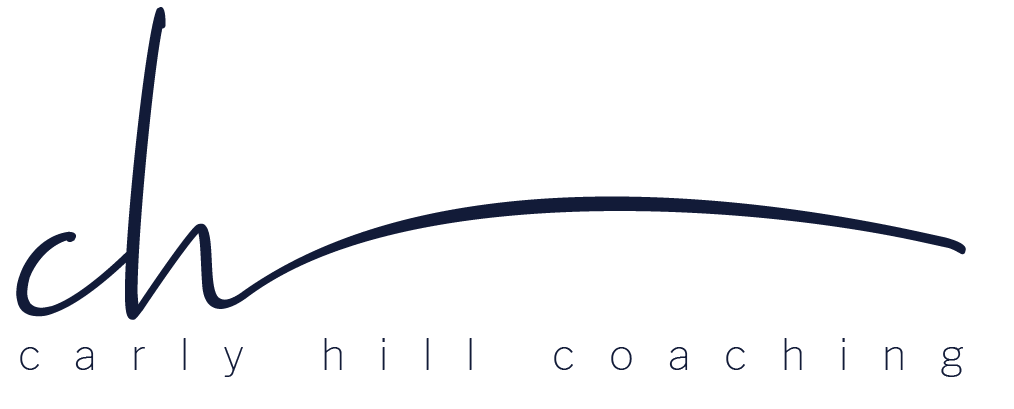Carly Hill Takes you From Therapist to Coach with 3x the income
Why Setting Boundaries Is Key to Coaching Success

FSDAVCFEBFEVSDDVFSD

FSDAVCFEBFEVSDDVFSD

FSDAVCFEBFEVSDDVFSD
Defining Boundaries
Importance of Boundaries in Coaching Practices

Setting boundaries in coaching is essential for maintaining professionalism and fostering healthy client relationships. Clear boundaries ensure that both the coach and client understand the expectations, creating a safe and structured environment for growth. Therapists transitioning to coaching can benefit greatly from establishing these guidelines early.
Professional boundaries for therapists help manage time effectively, prevent burnout, and maintain work-life balance. They also protect the coach’s mental and emotional well-being, enabling them to deliver consistent value to their clients. Carly Hill Coaching provides resources to help therapists build these critical frameworks.

Strategies for Setting Effective Boundaries
Establishing session times and sticking to them is a foundational boundary for any coaching practice. Clearly communicate the start and end times of sessions to avoid overextending. This practice not only respects your time but also sets a precedent for your clients to value it as well. You can also consider offering a buffer period between sessions to avoid any overlap and maintain clear boundaries.
Communication boundaries are equally important. Define preferred communication methods and response times. For example, specify that non-urgent matters should be addressed via email and provide a timeframe for replies. This approach minimizes interruptions and helps you stay focused on your priorities. This proactive approach helps client expectations management and ensures that you’re not overwhelmed with constant communication. This approach minimizes interruptions and helps you stay focused on your priorities.
Managing client expectations is another critical strategy. Outline what clients can expect from your coaching services and what is beyond the scope of your practice. This transparency fosters trust and prevents misunderstandings, contributing to more productive coaching relationships.
Set the Communicating Boundaries Effectively

To set boundaries effectively, start by discussing them during the initial consultation. Clearly outline your policies on session times, cancellations, and communication. Make sure clients understand the importance of respecting these boundaries to ensure a smooth working relationship. Ensure clients have a written agreement to refer back to. This not only provides clarity but also establishes mutual respect from the beginning.
Use compassionate yet firm language when communicating boundaries. For instance, you can say, “To ensure I can give my full attention to each client, I only respond to emails during business hours.” This approach demonstrates respect for both parties’ time. It’s important to let clients know that setting these boundaries is not about creating distance but ensuring that each session is productive and undistracted.

Periodically review boundaries with long-term clients to ensure they’re still effective and relevant. Adjustments may be necessary as your practice evolves or as individual client needs change. For example, as your client base grows or you introduce new services, you might need to reassess your availability or session duration. Conducting regular check-ins with clients about boundaries ensures that both parties remain comfortable and on the same page. This also shows that you’re proactive and open to evolving your practice while maintaining professional boundaries.
Carly Hill Coaching emphasizes the importance of clear communication in maintaining coaching professionalism. Tools like structured agreements and boundary-setting scripts can make this process smoother. By using these tools, you can avoid feeling uncertain or overwhelmed when discussing boundaries, ensuring that you approach each client with confidence. Using scripts can take the guesswork out of boundary-setting conversations, making it easier for both parties to align on expectations.
Addressing the Challenges of Boundary
Boundary challenges are inevitable, but handling them effectively is crucial. If a client frequently requests additional time, politely but firmly reiterate session limits. You can calmly explain that respecting the agreed-upon session time ensures that each client receives the full benefit of their appointment. For example, “I understand you have more to discuss, but let’s save that for our next session.”
Resist the urge to make exceptions, as this can lead to blurred boundaries. Consistency not only protects your time but also reinforces the professional nature of your practice. Even if the client needs extra time or flexibility, sticking to your set boundaries builds respect for your structure. By remaining consistent with your policies, clients will learn to respect your time and the guidelines you have established. This strengthens your overall coaching approach and prevents burnout or frustration on your part.
Seek support or guidance when boundary issues become overwhelming. Resources from Carly Hill Coaching can provide strategies and insights to address these challenges effectively.
Benefits of Setting Clear Boundaries
Clear boundaries contribute to a more organized and efficient coaching practice. They ensure your time is managed well, enabling you to focus on providing quality services. These boundaries also help you allocate time for administrative tasks, personal growth, and other essential activities, preventing overwhelm in your daily routine.
Boundaries also improve client relationships by fostering mutual respect and understanding. Clients who recognize and adhere to boundaries are more likely to engage productively in the coaching process.
Setting boundaries in coaching is a key step in preventing burnout in coaching professionals. By protecting your mental and emotional energy, you can maintain your passion and effectiveness as a coach.


Carly Hill Coaching offers training programs designed to help therapists and coaches establish and maintain professional boundaries. These tools and resources can empower you to build a thriving practice. With practical strategies and ongoing support, you can address challenges confidently and create a sustainable work-life balance. The guidance provided by Carly Hill Coaching is tailored to meet the unique needs of therapists transitioning into coaching roles, ensuring you feel supported every step of the way.
Adapting Boundaries for Different Clients
Each client is unique, so boundaries may need slight adjustments to meet individual needs. However, ensure these adjustments align with your overall policies to maintain consistency. For instance, you might offer a slightly earlier session for a client with morning availability constraints, as long as this does not conflict with your established work hours. It is also helpful to communicate the reasoning behind these adjustments to maintain transparency and mutual understanding with your clients. Tailoring boundaries in this way ensures you address individual client circumstances without compromising your workflow.
Flexibility can be beneficial in some cases, such as offering extended hours for a client in a different time zone. Communicate these exceptions clearly to avoid setting unrealistic expectations. Make it clear that such adjustments are made on a case-by-case basis and are not a standard practice. Setting boundaries while remaining adaptable can help accommodate diverse client needs without overwhelming your schedule.
Carly Hill Coaching provides guidance on tailoring boundaries while maintaining coaching professionalism. This balance helps create a supportive yet structured environment for clients. By offering strategies to adapt boundaries thoughtfully, Carly Hill Coaching equips you with tools to foster effective client relationships while safeguarding your time and energy.
Using Technology to Reinforce Boundaries

Technology can be a valuable tool for setting and maintaining boundaries. Use scheduling software to manage appointments and minimize back-and-forth communication. Platforms like Calendly or Acuity Scheduling allow clients to book sessions based on your availability, reducing the risk of overbooking and streamlining the scheduling process. By integrating these tools with your calendar, you can ensure that your personal and professional time remains distinct. This approach not only saves time but also helps clients adhere to established boundaries, creating a smoother experience for both parties.
Automated email responses can inform clients of your availability and expected response times. This proactive approach keeps clients informed while protecting your time. For example, you can set up an out-of-office reply that clearly states your working hours and when clients can expect a response.

Building a Sustainable Coaching Practice
Setting boundaries in coaching is vital for long-term success. By defining clear expectations, you can maintain professionalism and deliver consistent value to your clients. Boundaries also help prevent overcommitment, ensuring you can dedicate adequate time and energy to each client without compromising your personal well-being. A well-structured approach to boundaries creates balance, allowing you to meet client needs while safeguarding your own mental and physical health. Over time, this foundation supports steady growth and helps avoid burnout, a common challenge in helping professions.
With resources and training from Carly Hill Coaching, therapists transitioning to coaching can build sustainable practices. Establishing and upholding boundaries ensures you can thrive personally and professionally while supporting your clients’ growth. These tools not only simplify the transition but also provide strategies to help you stay focused and organized.

Carly Hill
LCSW; Author
Stay Up-to-date with our Content
Subscribe to learn more about our mission!
Stay Up-to-date With Our Content
Subscribe to learn more!
Free Resources
Free Resources
Copyright © 2025 Carly Hill Coaching LLC


